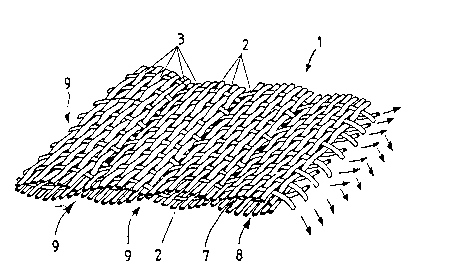Some of the information on this Web page has been provided by external sources. The Government of Canada is not responsible for the accuracy, reliability or currency of the information supplied by external sources. Users wishing to rely upon this information should consult directly with the source of the information. Content provided by external sources is not subject to official languages, privacy and accessibility requirements.
Any discrepancies in the text and image of the Claims and Abstract are due to differing posting times. Text of the Claims and Abstract are posted:
| (12) Patent Application: | (11) CA 2116978 |
|---|---|
| (54) English Title: | A METHOD FOR MANUFACTURING A LAMINATING REINFORCED FIBRE STRUCTURE AND A CORRESPONDING REINFORCED FIBRE STRUCTURE |
| (54) French Title: | STRUCTURE EN FIBRE RENFORCEE PAR COLLAGE ET PROCEDE DE FABRICATION |
| Status: | Deemed Abandoned and Beyond the Period of Reinstatement - Pending Response to Notice of Disregarded Communication |
| (51) International Patent Classification (IPC): |
|
|---|---|
| (72) Inventors : |
|
| (73) Owners : |
|
| (71) Applicants : |
|
| (74) Agent: | GOWLING WLG (CANADA) LLP |
| (74) Associate agent: | |
| (45) Issued: | |
| (86) PCT Filing Date: | 1992-09-11 |
| (87) Open to Public Inspection: | 1993-03-18 |
| Availability of licence: | N/A |
| Dedicated to the Public: | N/A |
| (25) Language of filing: | English |
| Patent Cooperation Treaty (PCT): | Yes |
|---|---|
| (86) PCT Filing Number: | PCT/FI1992/000241 |
| (87) International Publication Number: | WO 1993005219 |
| (85) National Entry: | 1994-03-03 |
| (30) Application Priority Data: | |||||||||
|---|---|---|---|---|---|---|---|---|---|
|
2116978 9305219 PCTABS00020
The object of the invention is a method for manufacturing a
laminating reinforced fibre structure (1), in which fibre layers (7,
8) made of cross-woven warp or weft yarn bundles are manufactured
as a warp structure, these being tied together with ties (9) and
a filler (4) is placed in the channel formed by the layers one
top of each other and the ties. In accordance with the invention
two fiber layers (7, 8) one top of one another are woven together
in a manner that is as such known, in such a way that the warp (2)
or alternatively weft (3) bundles of yarns run in turn in the
upper and lower structures thus forming large channels in relation
to the size of the fabric and pieces impermeable to a binder
substance is used as a filler (4).
Note: Claims are shown in the official language in which they were submitted.
Note: Descriptions are shown in the official language in which they were submitted.

2024-08-01:As part of the Next Generation Patents (NGP) transition, the Canadian Patents Database (CPD) now contains a more detailed Event History, which replicates the Event Log of our new back-office solution.
Please note that "Inactive:" events refers to events no longer in use in our new back-office solution.
For a clearer understanding of the status of the application/patent presented on this page, the site Disclaimer , as well as the definitions for Patent , Event History , Maintenance Fee and Payment History should be consulted.
| Description | Date |
|---|---|
| Inactive: IPC from MCD | 2006-03-11 |
| Inactive: IPC from MCD | 2006-03-11 |
| Inactive: IPC from MCD | 2006-03-11 |
| Application Not Reinstated by Deadline | 2000-09-11 |
| Time Limit for Reversal Expired | 2000-09-11 |
| Inactive: Abandon-RFE+Late fee unpaid-Correspondence sent | 1999-09-13 |
| Deemed Abandoned - Failure to Respond to Maintenance Fee Notice | 1999-09-13 |
| Application Published (Open to Public Inspection) | 1993-03-18 |
| Abandonment Date | Reason | Reinstatement Date |
|---|---|---|
| 1999-09-13 |
The last payment was received on 1998-08-28
Note : If the full payment has not been received on or before the date indicated, a further fee may be required which may be one of the following
Please refer to the CIPO Patent Fees web page to see all current fee amounts.
| Fee Type | Anniversary Year | Due Date | Paid Date |
|---|---|---|---|
| MF (application, 5th anniv.) - small | 05 | 1997-09-11 | 1997-08-12 |
| MF (application, 6th anniv.) - small | 06 | 1998-09-11 | 1998-08-28 |
Note: Records showing the ownership history in alphabetical order.
| Current Owners on Record |
|---|
| FINNCLEVER OY |
| Past Owners on Record |
|---|
| MAURI LAITINEN |